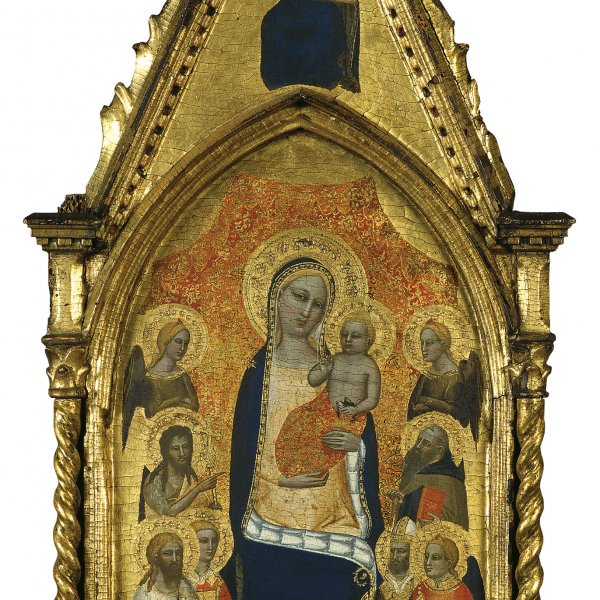Niccolò di Tommaso
Active ca. 1346-76
Niccolò di Tommaso is documented in Florence, Naples and Pistoia in the second half of the 14th century and his name is registered in the Arte dei Medici e Speziali around 1346. He trained in the circle close to Maso di Banco. Before entering the workshop of Nardo di Cione and working with that artist on the Strozzi chapel in Santa Maria Novella, a document of 1370 states that he was already working in association with Nardo and Jacopo di Cione, with whom he produced a preparatory drawing for a polyptych for San Pier Maggiore. During that same year the artist was working in Pistoia in the church of San Giovanni Fuorcivitas. In 1371 he travelled to Naples where he signed a polyptych in the church of Sant’Antonio Abate (Museo Nazionale di Capodimonte, Naples). On his return to Tuscany, Niccolò di Tommaso executed a large fresco cycle in the church of Tau, Pistoia. Other important works include The Coronation of the Virgin (Gallerie dell’Accademia, Venice), and The Massacre of the Innocents (Galleria degli Uffizi, Florence).
It was Offner who first reconstructed this artist’s life and work and attributed a varied group of works to him. Dating from his early period is The Madonna del Parto in the church of San Lorenzo, Florence, which clearly reveals the influence of Orcagna’s studio. While Niccolò di Tommaso’s paintings manifest a marked narrative spirit, they also reveal an interest in depicting reality, possibly influenced by Giovanni da Milano and by the Bolognese painter Dalmasio, with whom he worked in the Palazzo Comunale in Pistoia. Niccolò di Tommaso’s mature works move away from an interest in decorative elegance to focus on the representation of daily life, expressed in a richer and livelier manner. The artist is recorded for the last time in Florence in 1376.
It was Offner who first reconstructed this artist’s life and work and attributed a varied group of works to him. Dating from his early period is The Madonna del Parto in the church of San Lorenzo, Florence, which clearly reveals the influence of Orcagna’s studio. While Niccolò di Tommaso’s paintings manifest a marked narrative spirit, they also reveal an interest in depicting reality, possibly influenced by Giovanni da Milano and by the Bolognese painter Dalmasio, with whom he worked in the Palazzo Comunale in Pistoia. Niccolò di Tommaso’s mature works move away from an interest in decorative elegance to focus on the representation of daily life, expressed in a richer and livelier manner. The artist is recorded for the last time in Florence in 1376.





